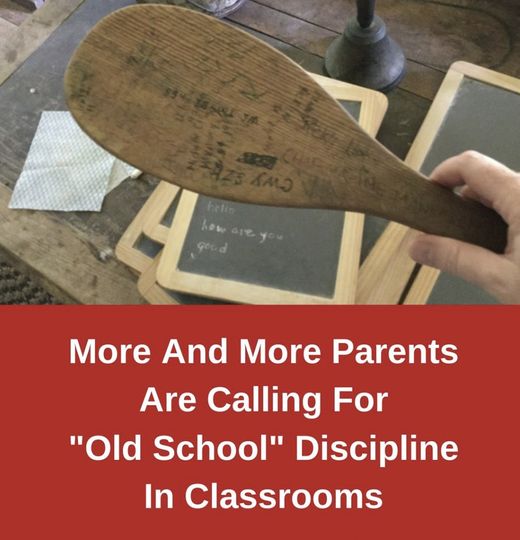The call for a return to traditional discipline methods in classrooms is gaining traction among parents and educators alike. This resurgence stems from growing concerns over the effectiveness of modern behavioral strategies in managing disruptive students. The debate was ignited by a recent senate inquiry in Australia that recommended reintroducing time-tested disciplinary measures to tackle classroom disruptions.
One of the key suggestions involves structuring classrooms to instill a sense of order and discipline. This includes arranging desks in rows facing the teacher and explicitly teaching students fundamental behaviors, such as how to enter a classroom, sit properly, and ask questions respectfully. A noteworthy aspect of these recommendations is the introduction of ‘super walking,’ a technique designed to promote orderly movement within school premises. The overall goal of these measures is to create a disciplined and conducive learning environment.
The demand for stricter classroom discipline isn’t arbitrary. Research conducted by the Australian Education Research Organisation (AERO) reveals that a significant portion of teachers’ time—around 20%—is spent addressing disruptive behavior in classrooms. This not only hampers the learning process but also adds stress to educators. Dr. Jenny Donavan, CEO of AERO and a former teacher herself, has been vocal about the need for consistency in teaching appropriate behaviors throughout a student’s education. She underscores that there is a strong correlation between disciplined behavior in the classroom and academic success, making this an issue of paramount importance.
Parents, on the other hand, are divided in their opinions. Some attribute the increase in disruptive behavior to a lack of discipline at home, advocating for stricter measures in schools as a necessary intervention. These parents believe that without firm boundaries, children are more likely to act out in the classroom, disrupting not only their learning but also that of their peers. They argue that the erosion of discipline in schools reflects broader societal changes and that reinstating traditional discipline could be a step towards reversing this trend.
On the flip side, there is caution among some educators and experts about leaning too heavily on punitive measures. Former principal Adam Voigt, a prominent voice in the education sector, emphasizes the complexity of this issue. He advocates for a balanced approach that integrates modern teaching methods with traditional disciplinary practices. Voigt warns against the potential downsides of over-reliance on old-school punishment, suggesting that it may not address the underlying causes of disruptive behavior. Instead, he proposes a more holistic approach that considers the emotional and psychological needs of students alongside the need for discipline.
The debate over how to handle classroom behavior isn’t just about discipline; it’s about the kind of educational environment that best supports student growth. While traditional methods might bring immediate order, the long-term impacts of such approaches on student well-being and development remain a topic of concern. Modern education increasingly emphasizes the importance of understanding the root causes of behavioral issues, which often stem from external factors such as family dynamics, mental health challenges, or social pressures. Addressing these underlying issues requires more than just strict discipline; it requires a comprehensive support system for students.
Moreover, the push for old-school discipline reflects broader societal concerns about respect and authority. Many parents and educators feel that today’s children are growing up in an environment where traditional values are being eroded, leading to a lack of respect for authority figures. This, in turn, is seen as contributing to the rise in classroom disruptions. Reintroducing strict discipline is viewed by some as a way to counteract this trend and reinforce respect for teachers and other authority figures.
However, it’s important to recognize that not all students respond well to strict disciplinary measures. For some, such approaches can lead to increased anxiety, resentment, and disengagement from the learning process. This highlights the need for a nuanced approach that takes into account the individual needs of students. A one-size-fits-all approach to discipline is unlikely to be effective in today’s diverse and complex educational landscape.
As the debate continues, it is clear that finding the right balance between traditional and modern approaches to discipline will be key. Schools need to create environments where students feel both supported and held accountable for their behavior. This requires collaboration between educators, parents, and policymakers, all of whom have a stake in the future of education.
In conclusion, the call for a return to ‘old-school’ discipline in classrooms is a reflection of broader societal concerns about respect, authority, and the role of education in shaping future generations. While there is no easy solution to the challenges of classroom management, it is clear that a balanced approach that incorporates both traditional and modern methods will be essential in creating effective and supportive learning environments. As this debate evolves, the voices of parents, educators, and students themselves will be crucial in shaping the policies and practices that will define the future of education.

